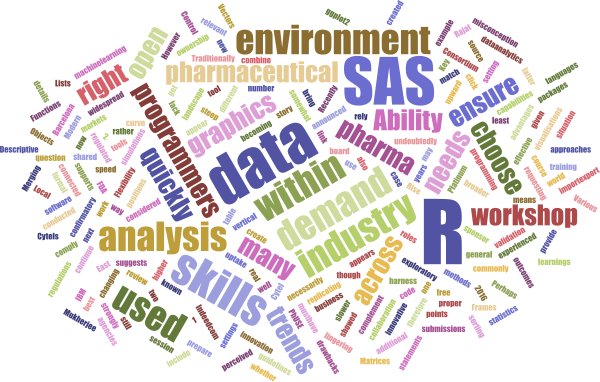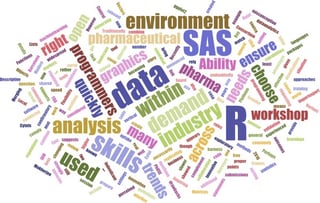
Cytel's blog featuring the latest industry insights.

The Rise of R: Should SAS programmers get up to speed?
 Recently, IBM announced that it was becoming a Platinum sponsor of the R Consortium. It’s well known that R is one of the most commonly used data-analytics and machine-learning languages in the world right now. Across vertical markets, demand for R skills is on a steep upward curve. While demand for SAS still appears to be higher across the board some analysis suggests that if trends continue, then demand for R skills could match SAS in the next few years (1) . Within the pharmaceutical industry though, it’s traditionally been a somewhat different story, with trends not necessarily replicating the broader business environment. SAS programming use is undoubtedly more widespread, and for many has been considered as the must-have. However, it’s clear that while uptake in pharma may be slower than general industry, the skills landscape does appear to be changing. A review of open positions on Indeed.com showed a number of roles requesting R skills at least as a complement to SAS.
Recently, IBM announced that it was becoming a Platinum sponsor of the R Consortium. It’s well known that R is one of the most commonly used data-analytics and machine-learning languages in the world right now. Across vertical markets, demand for R skills is on a steep upward curve. While demand for SAS still appears to be higher across the board some analysis suggests that if trends continue, then demand for R skills could match SAS in the next few years (1) . Within the pharmaceutical industry though, it’s traditionally been a somewhat different story, with trends not necessarily replicating the broader business environment. SAS programming use is undoubtedly more widespread, and for many has been considered as the must-have. However, it’s clear that while uptake in pharma may be slower than general industry, the skills landscape does appear to be changing. A review of open positions on Indeed.com showed a number of roles requesting R skills at least as a complement to SAS.
Traditionally, within a pharma setting R has been used more for simulations than for analysis, and in exploratory rather than confirmatory settings. At Cytel, many of our programmers are experienced in R and harness its capabilities in this way. Some advantages of R are:
Of course, the latter two points are also connected to the perceived drawbacks of R within the strongly regulated pharmaceutical industry. While innovative approaches can be created and shared in R packages very quickly, the lack of ownership and formal environment means that additional work needs to be conducted to ensure proper validation.
There is a lingering misconception that submissions to the FDA and other agencies should not, and cannot rely on R. This is not the case (2) . However, any software used to prepare data analysis needs to comply with the relevant regulations and guidelines.
Perhaps the real question here is not whether to choose R over SAS or SAS over R but how to choose the right tool in a given situation, to ensure the best outcomes.
Liked this article? Click the button below to subscribe to the Cytel blog and get the latest biostatistics and clinical data trends, best practices and case studies direct to your inbox.
References
1) Hilbe, J.M. (2012) The popularity of data analysis software. Available at: http://r4stats.com/articles/popularity (Accessed: 21 June 2016).
2) Smith, D. (2015) ‘FDA: R OK for drug trials’, September. Available at: http://blog.revolutionanalytics.com/2012/06/fda-r-ok.html (Accessed: 21 June 2016).
